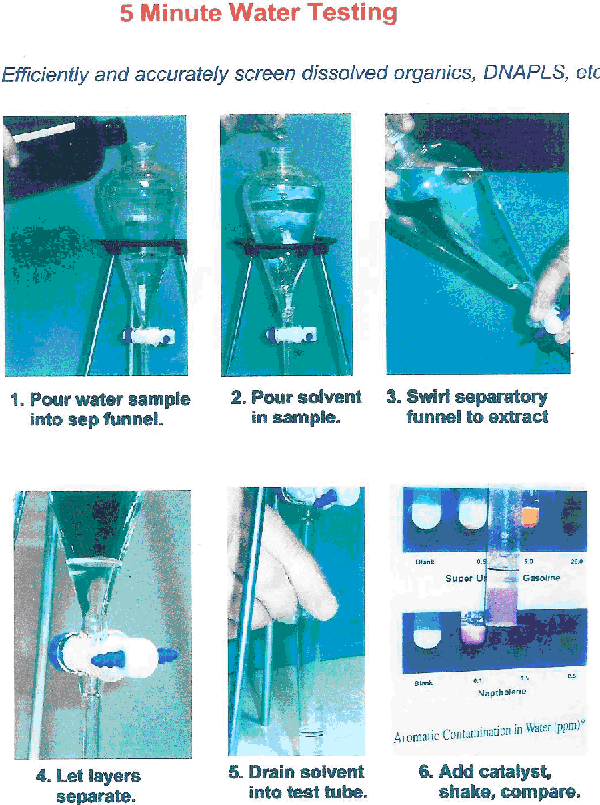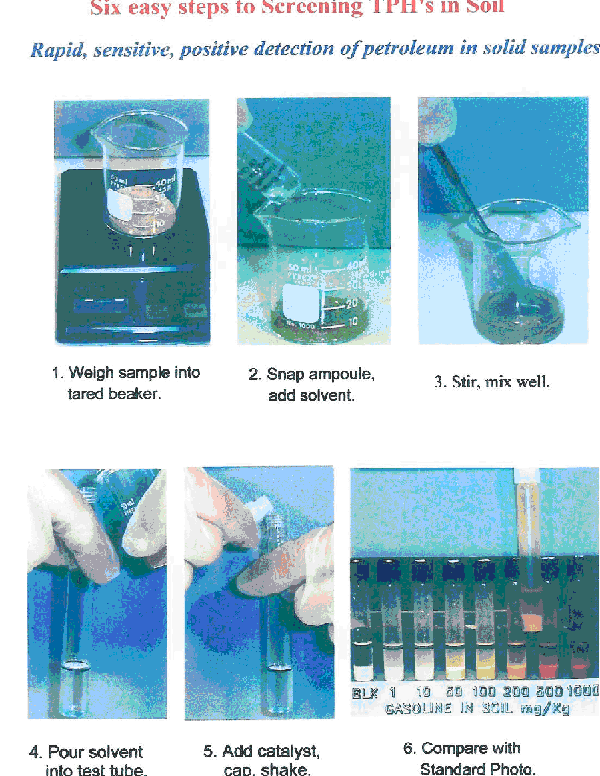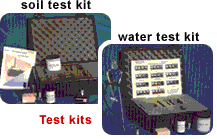
Example Instruction
|
Soil |
Water |
1. Weigh 5 grams of soil sample to be analyzed
2. Place sample into beaker
3. Add solvent to sample in beaker
4. Stir or mix sample and solvent to form an extract
5. Pour extract into test tube
6. Add catalyst to test tube
7. Shake test tube
8. Compare test tube to color ID card |
1. Measure 500 ml of liquid sample to be analyzed
2. Pour sample into separatory funnel
3. Add solvent to to sample
4. Shake sample and solvent to form an extract
5. Drain extract into test tube
6. Add catalyst to test tube
7. Shake test tube
8. Compare test tube to color ID chart |
Color ID charts
Once a sample has been mixed with the reagents, the result is a unique color. The color is quickly compared to the standardized color ID chart to determine the amount of petroleum in the sample...all the way down to parts per billion.
AROMATIC CONTAMINATION
Petroleum Detection Specifications
| Petroleum Substance |
Soil (ppm) |
Water (ppm) |
| Unleaded gasoline |
1 |
0.1 |
| Diesel fuel |
1 |
0.1 |
| Crude oil |
1 |
0.1 |
| Heating oil |
1 |
0.1 |
| PCB's |
0.5 |
0.05 |
| Jet fuel |
1 |
0.1 |
| Fuel oil |
1 |
0.1 |
| Motor oil |
1 |
0.1 |
| Waste oil |
1 |
0.1 |
| Transformer oil |
1 |
0.1 |
| Lubricating oil |
1 |
0.1 |


